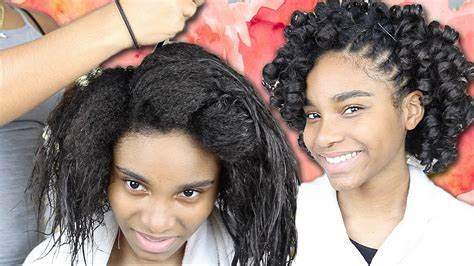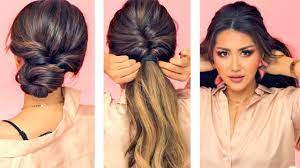
Preparation is critical to ensuring a seamless journey, whether transitioning or planning a big chop. Being better informed will only enhance this effect.
Patience is Key
When you transition from relaxed hair to natural curls, others will have opinions about your choice. While some may support it and others may discourage it, remember that this journey should be about you and your personal goals. No matter your method of choice – whether a Big Chop, gradual transitioning method, or Big Chop – be prepared to invest time and patience during this transition process and expect some amount of breakage during your transition period.
As part of your transition, you must select hairstyles that will help conceal the two textures while being easy to manage. Committing to truly pampering your locks during this transition period and forgoing any heat-styling tools that could cause unnecessary damage is also vital; deep conditioning your hair regularly and limiting its use are crucial steps.
Keep It Moisturized
Maintaining proper hair hydration during transitioning is the key to healthy locks. Since your natural locks may be dryer than the processed pieces you’re losing, moisturizing products that help balance this out can make all the difference in health during this process. Avoid drying ingredients such as sulfates in shampoo and conditioner, alcohol-based stylers, and harsh heat treatments when styling or treating your hair. Wash your locks once every week while deep conditioning twice weekly. Ideal trim frequency should also include regular haircuts to maintain length retention and allow your locks to grow freely without suffering damaged ends that could slow or inhibit their progress. Trimming every three months or so is recommended. Doing this allows the ends time to heal without dealing with damaged ends that can hinder their natural growth and lead to uncomfortable and even destructive conditions, so prolonging it would doom this unless necessary!
Avoid Tight Hairstyles
Transitioning your hair can be a monumental decision that changes how you wear your locks. Length retention is often the top concern during the transition. Yet, you can still achieve your desired length without cutting off all your locks by switching up protective styles regularly – this gives your tresses time to breathe while allowing you to explore more about their curls or coils – try teeny-weeny afros, two-strand twists, Bantu knots or finger coils as style options during this process! Always avoid placing tension on your hairline, temples, and neck; baby hairs in these areas are fragile and easily break or snap if stretched too tightly. Protein supplements should be included during transitioning processes for places like your new-grown strands meeting relaxed ones (the line of demarcation). Don’t overdo it, though, as too much can leave your strands dry – try Black Vanilla 4-in-1 Combing Creme as a source of nourishment!
Don’t Stress the Shedding
Shedding can be part of the transition process, but your emotions must stay controlled. What may seem like you are losing a great deal of hair could just be old chemically treated follicles being shed so new, healthier growth can take hold. Maintaining healthy ends through regular trimming is also crucial during this phase. Keeping them in good shape promotes hair growth and prevents split ends, single-strand knots, and lock damage. Heat protectants such as our Monoi Repairing hair Mask may also prove invaluable in keeping them strong and healthy for optimal hair health and preventing further damage to transitioning locks.

